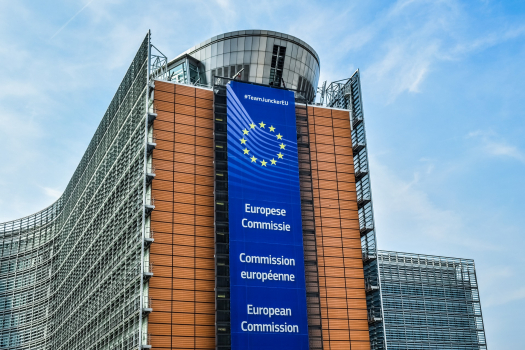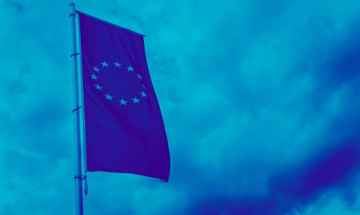
UK moving from the Single Market to unpredictable future – Are you prepared?
Both parties agree that little progress has been made in the last negotiations on 18-21 August. There are still several obstacles to the future trade relationship (e.g. level playing field, state aid framework, subsidy provision, etc.) and all this needs to be agreed as soon as possible. Extensive trade deal is hardly possible any more, and the negotiators are trying to come to a solution of making smaller, limited deals that could cover certain economic sectors and the cross-border mobility within. These sectors could include air traffic, food and beverages, medicine and tourism. Smaller deals could ease the overall situation between the EU and the UK.
Besides Brexit, COVID-19 pandemic has hit hard the British economy. In April the British economy plunged even 20 %. Historic drop is explained by the loss of customers in the services sector and end for many activities in the industry. Handelsbanken made a forecast in the spring, proposing an 8 % drop in the British GDP this year, followed by a 4,5 % recovery the next year. Interestingly enough, another motivation for the UK government for not to extend the transition period is the fact that this might oblige them to continue participating the EU financing also 2021 and 2022, including the recovery funding package.
Another game changer for businesses are the new UK trade deals which it has started to negotiate, especially with the US. While it is hard to see whether the UK could become a gateway for the US businesses to Europe, UK may indeed offer some advantages for the US companies willing to enter into the UK market. To ensure more than busy times for the UK Trade department, it has also started to negotiate trade agreements at least with Japan, Australia and New Zealand. And not to forget the potential accession to the Comprehensive and Progressive Agreement for Trans-Pacific Partnership (CPTPP).
Recognising the impact of coronavirus on businesses’ ability to prepare, the UK took the decision in June to introduce border controls on imports coming into GB from the EU in 3 stages up until 1 July 2021 (more details below). As the UK authorities explained, firms will be able to defer customs forms and tariff payments for 6 months, and some physical checks will be delayed to July. This, according to the UK Government, will give industry sufficient time to make necessary arrangements and prepare.
The UK also announced some new tools to prepare for after the end of the transition period, notably:
- an EU Settlement Scheme was established to defend citizen’s rights: EU, EEA or Swiss citizens in the UK must apply (until 30 June 2021) to be able to continue living in the UK after 30 June 2021.
- unprecedented £705 million investment for new infrastructure, jobs and technology at GB-EU border.
- a new public information campaign to help businesses and individuals prepare for the end of the transition period, including a checker tool that quickly identifies the necessary next steps to take.
- a new Border Operating Model (pdf. attached), providing traders and the border industry with a clear guide to how the border with the EU will work after the transition period.
The 3 stages of the new border controls on imports coming into GB from the EU are as follows:
- From January 2021: basic customs requirements for standard goods + VAT on imported goods (up to 6 months to complete customs declarations and tariff payments) + limited physical checks at destination
- From April 2021: pre-notification and health documentation for products of animal origin (POAO) + physical checks at destination
- From July 2021: full customs declarations for any imported goods + tariffs payments + full Safety and Security declarations + more physical checks + checks at GB Border Control Posts + GVMS
UK also unveiled plans on 12th July to spend £705 million (€800m) on new infrastructure at its ports and border points to help smooth the flow of traffic. The new spending is said to ensure that traders and the border industry are able to manage the changes and seize the opportunities as we lay the foundations for the world’s most effective and secure border. The spending will include £470 million on port and inland infrastructure, the remainder covering new IT systems and 500 more Border Force staff needed to ensure compliance with new customs procedures and controls.
For its part, the European Commission published its own guidance for businesses on 9 July under the title “Getting ready for changes – Communication on readiness at the end of the transition period between the European Union and the United Kingdom” where it urges the EU firms to “consider revisiting their existing preparedness plans”. The Commission communication provides an overview of the main areas of change that will take place in any event, whether there is an agreement on a future partnership between the European Union and the United Kingdom or not.
KEY POINTS FOR FINNISH BUSINESSES:
Even if the EU and the UK were to conclude, by the end of 2020, an ambitious partnership covering all areas agreed in the Political Declaration such an agreement would create a relationship which will be very different from the UK’s participation in the EU Single Market and Customs Union, and in the VAT and excise duty area.
- Customs formalities, checks and controls. As of 1 January 2021, the UK will no longer be part of the EU Customs Union. Therefore, the Technology Industry advices the businesses to get a customs intermediary to complete formalities and submit the required declarations, e.g. customs information to HMRC systems. Customs formalities required under Union law will apply to all goods entering the customs territory of the Union from the UK or leaving that customs territory to the UK. EU businesses wishing to import from or export to the UK will need to ensure they have an Economic Operators Registration and Identification (EORI) number in order to go through customs formalities.
- Customs and taxation rules for import and export of goods (tariffs, VAT, excise). As of 1 January 2021, the originating status of goods traded will have to be demonstrated in order for them to be entitled to preferential treatment under a possible future EU-UK agreement. Goods not meeting origin requirements will be liable to customs duties even if a zero-tariff, zero-quota EU-UK trade agreement is put in place. Trade between the EU and its preferential partners will also be affected, as UK content (in terms of both material and processing operations) will become ‘non-originating’ under Union preferential trade arrangements for the determination of the preferential origin of the goods that incorporate such UK content.
- Value Added Tax (VAT) will be due upon importation of goods brought into the VAT territory of the EU from the UK, at the rate that applies to supplies of the same goods within the Union. Goods exported from the Union to the UK will be exempt from VAT if they are dispatched or transported to the UK, as would be the case for any other destination outside the EU. In such situations, the supplier of exported goods must be able to prove that the goods have left the Union.
- The UK withdrawal from the EU ETS at the end of the transition period (31st December 2020). After the end of the transition period, the EU rules governing the EU ETS, and in particular Directive 2003/87/EC, will no longer apply to the United Kingdom. This has in particular the following consequences: The amount of emission allowances in the EU ETS will be reduced accordingly and it will become harder for the EU to achieve its carbon neutrality by 2050 because UK has relatively more offshore clean wind power and as a developed country more resources to invest in carbon neutral technology that EU members on the average.
- Certificates and authorizations of products, establishment requirements, labelling and marking. EU businesses placing goods on the UK market will need to make sure that they comply with all relevant UK rules and standards as of 1 January 2021. As regards authorization and certification processes, while preparatory measures should have been taken already in 2019, EU businesses should double-check compliance well ahead of 1 January 2021. (This rule applies to construction products as well). Unfortunately, harmonization of the new UKCE marking with the CE marking and EU rules and mutual recognition are still unclear.
- EU business would need to put approved safeguards in place to continue transfers of personal data to the UK. Until a robust mutual adequacy decision on personal data transfers is in force, a standstill non-enforcement arrangement to avoid any disruption to the flow of personal data should be agreed. In order to keep the businesses functioning, digital, real-time and fast-track services must be guaranteed with at least a temporary agreement.
- The EU posting Workers Directive will no longer apply in the UK. Unless at least a temporary mutual agreement on social security coverage (EU27 MSs national immigration rules) is reached the posted workers risk leaving to their country/double contributions. The services chapter of a future treaty would facilitate the temporary movement for business purposes as well as the future mutual recognition of professional qualifications as well as the movement of international students and researchers.
- The latest element of the EU preparation is the is the so-called Brexit-fund of 5 billion euros for the Member States and companies affected from Brexit.
Kimmo Järvinen
Head of Brussels Office
+358 43 825 7642
kimmo.jarvinen@teknologiateollisuus.fi
To find more about the EU Commission documentation on getting ready for the end of this years transitoin period please visit the following links:
Read more about the value added tax (VAT) – goods: Download the readiness note.
EU ECOLABEL: Download the readiness note
1 Agreement on the withdrawal of the United Kingdom of Great Britain and Northern Ireland from the European Union and the European Atomic Energy Community, OJ L 29, 31.1.2020, p. 7 (‘Withdrawal Agreement’).
2 Subject to certain exceptions provided for in Article 127 of the Withdrawal Agreement, none of which is relevant in the context of this Communication.
3 In line with Article 132(1) of the Withdrawal Agreement, it would have been possible to extend this transition period once, by up to one or two years by way of a joint decision by the European Union and United Kingdom before 1 July 2020. The United Kingdom refused any such decision, meaning that, by legal automaticity, the transition period will end on 31 December 2020.
4 Except those covered by Article 138 of the Withdrawal Agreement and Political Declaration (Peace Plus).
5 HM Government, ‘The Future Relationship with the Union: The UK’s Approach to Negotiations’, 27 February 2020.
6 Draft text of the Agreement on the New Partnership between the European Union and the United Kingdom, published on 17 March 2020, see: https://ec.europa.eu/info/publications/draft-text-agreement-new-partnership-united-kingdom_en
7 Revised text of the Political Declaration setting out the framework for the future relationship between the European Union and the United Kingdom as agreed at negotiators’ level on 17 October 2019, OJ C34, 31 January 2020, 1-16.
8 In particular, a free trade agreement does not provide for internal market concepts (in the area of goods and services) such as mutual recognition, the ‘country of origin principle’, and harmonization. With a free trade agreement there are customs formalities and controls, including those concerning the origin of goods and their input, as well as prohibitions and restrictions for imports and exports.



